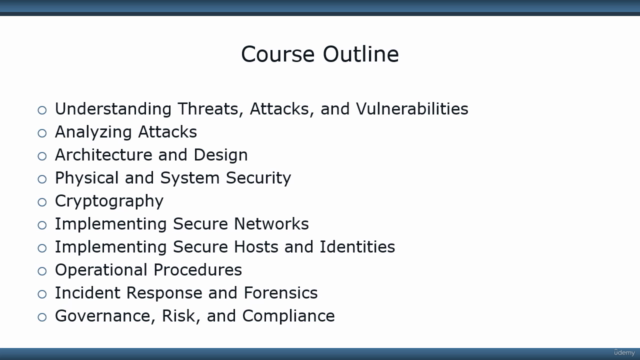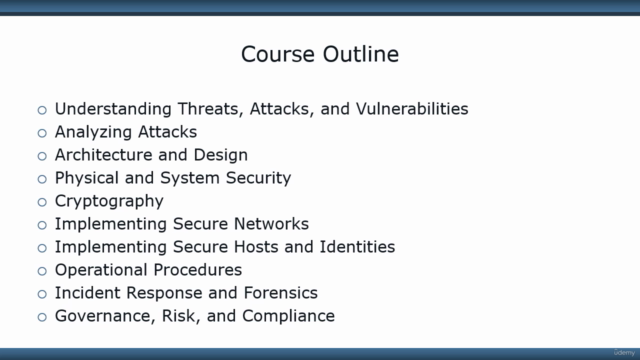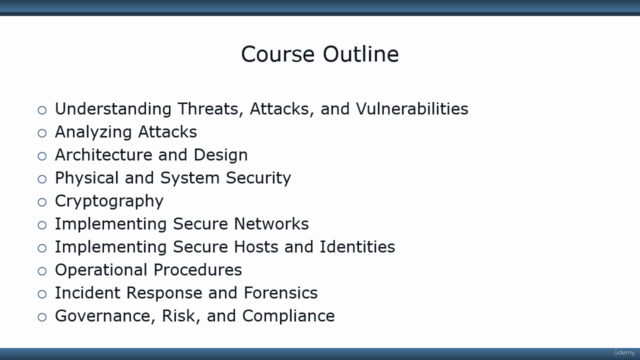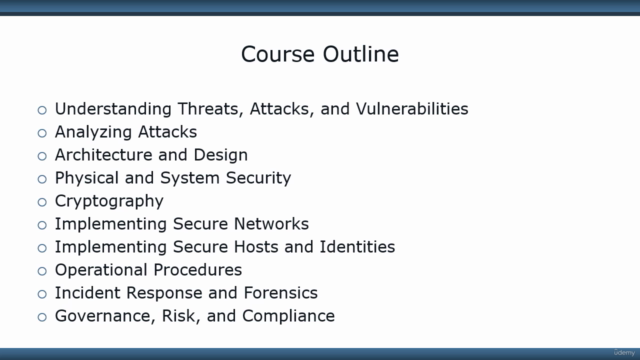CompTIA Security+ (Exam SY0-601)
CompTIA Security+ (Exam SY0-601)
4.30 (48 reviews)

218
students
11 hours
content
Apr 2022
last update
$49.99
regular price
What you will learn
Understand threats, attacks, and vulnerabilities
Analyze attacks
Learn about enterprise security architecture
Design authentication and authorization
Understand cloud and virtualization concepts
Secure application development and deployment
Implement physical security controls
Secure embedded and specialized systems
Learn about cryptographic concepts
Implement public key infrastructures
Implement secure networks
Implement secure mobile solutions
Implement secure hosts and identities
Use tools to assess security
Utilize data sources for investigation
Apply mitigation techniques
Learn about incident response and forensics
Understand governance, risk, and compliance
Screenshots




Related Topics
1607282
udemy ID
3/20/2018
course created date
11/22/2019
course indexed date
Bot
course submited by